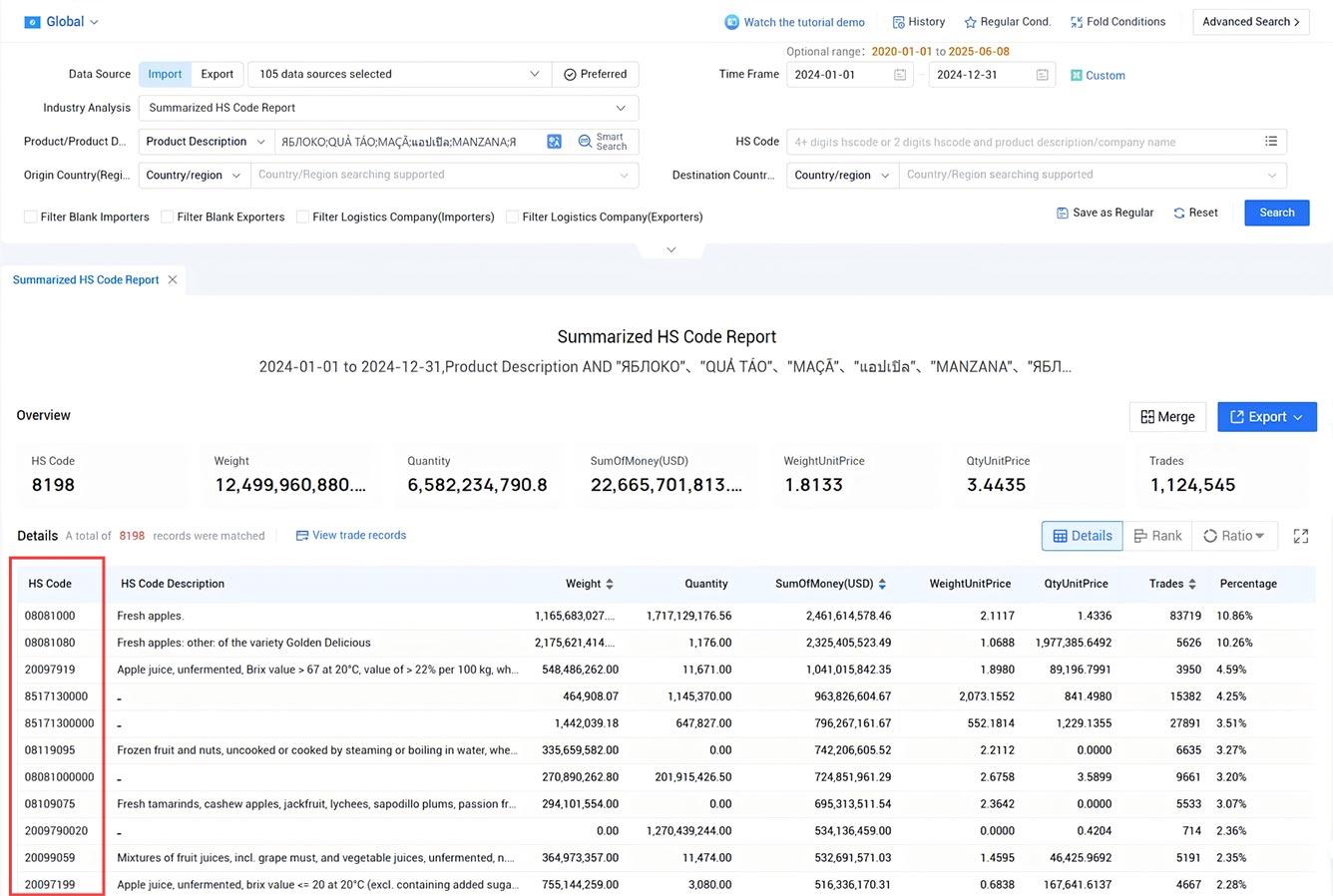 Trade Data Provider
Trade Data Provider
 2025-06-10
2025-06-10
HS Code, also known as the Harmonized System Code, is a commodity classification code developed under the leadership of the Customs Cooperation Council (now the World Customs Organization). It is used by customs authorities, statisticians, import-export regulators, and participants in international trade. It plays a critical role in customs tariffs and trade statistics, including freight billing, data transmission, and the application of preferential tariff systems.

The HS Code Structure Consists of Three Main Parts:
1. Classification rules
2. Section, chapter, and subheading notes
3. Sequentially arranged headings and subheadings with their descriptions
Looking up the corresponding HS code allows you to find out the Most-Favored-Nation (MFN) tariff rate, general tariff rate, VAT rate, and any regulatory conditions for import.
Classification Principles for HS Codes:
·If there is a named listing, use the named listing
·If not, classify by intended use
·If not by use, then by material composition
·If not by composition, then by category
·For mixed compositions, classify by majority proportion
·For identical compositions, classify based on the later heading
Is the HS Code Used Worldwide?
The HS Code includes 22 sections and 98 chapters. The first 6 digits are internationally standardized and recognized globally. Digits beyond the sixth vary by country and can extend to 8 or 10 digits.
Websites for HS Code Lookup:
1. U.S. Customs HS Code (HTS Code) Lookup:https://hts.usitc.gov/
Enter the first 6 digits of your product to search, and then find the description that best matches your item. This will give you the corresponding U.S. HTS code and applicable import duty rate.
2. Lookup U.S. HS Codes via Tendata:https://www.tendata.com
Tendata allows you to look up complete U.S. customs codes. Simply select your target country in Tendata and enter the HS code (or product keyword) to access all relevant import/export data. This includes suppliers, buyers, product details, origin country, destination country, transaction dates, contact information, and more.
>>> Lookup U.S. HS Codes with Tendata <<<

While many websites provide basic HS code lookup functions, they are often incomplete and offer only rough classifications. They typically do not provide detailed import/export data or company contact information. Tendata, on the other hand, aggregates comprehensive global trade data—including suppliers, buyers, product specifics, countries of origin and export, transaction dates, and contact info—making it an essential tool for exporters to identify global customers.
You May Also Be Interested in These Contents:
1. The Best 10 Free Trade Data Platforms to Make Import & Export Easier!
2. What is the Best Global Trade Database?
3. Free Import and Export Data Online
Category
Leave Message for Demo Request or Questions


 T-info
T-info T-discovery
T-discovery

 My
Tendata
My
Tendata Market Analysis
Market Analysis Customer
Development
Customer
Development Competitor
Monitoring
Competitor
Monitoring Customer Relationship
Customer Relationship



















